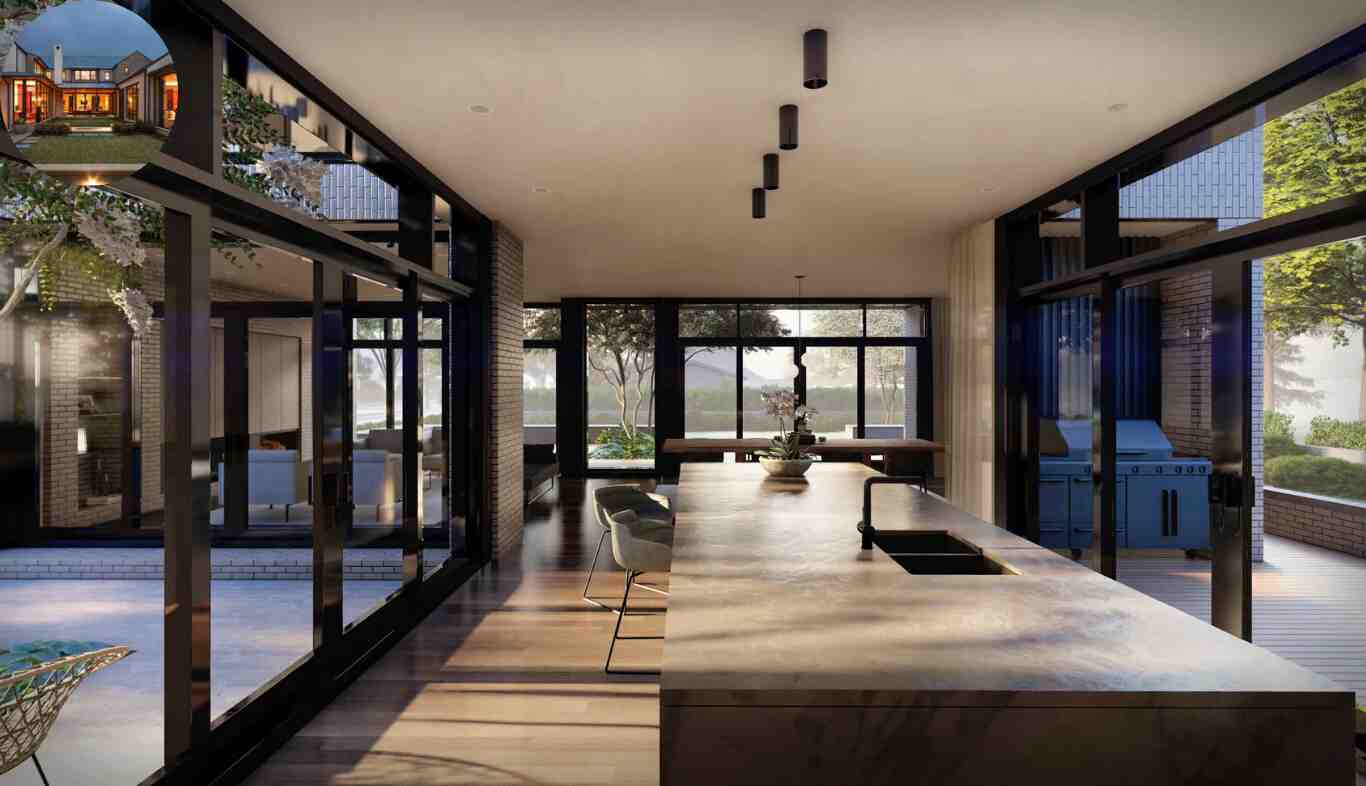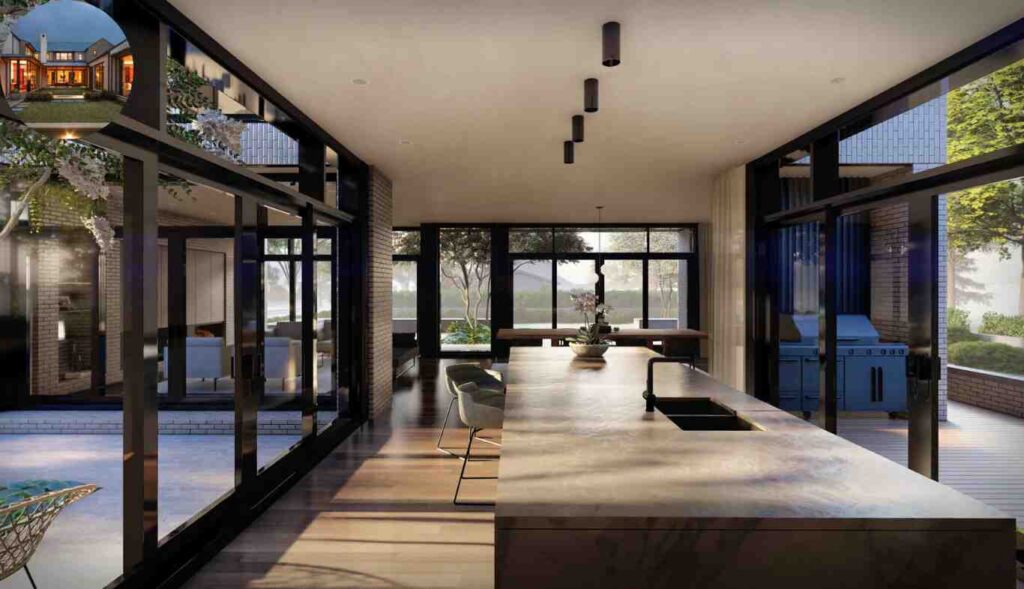Courtyard-style homes have long been admired for their aesthetic appeal, privacy, and connection to nature. They offer a unique living experience, often blending indoor and outdoor spaces seamlessly.
Courtyard homes have been a symbol of elegance and tranquility in architecture for centuries. Their ability to create a private oasis within the home is one of their most celebrated features. Imagine stepping into a bright, open space surrounded by greenery, shielded from the prying eyes of the outside world.
While courtyard homes are undeniably beautiful, their design comes with unique challenges that can significantly impact comfort, energy efficiency, and overall livability. Understanding these potential issues is crucial to making an informed decision.
Reduced Natural Light

A. How Courtyards Block Sunlight
One of the most common misconceptions about courtyard homes is that they let in abundant natural light. However, the reality is often the opposite. Since courtyards are typically enclosed by walls or surrounded by rooms, they create a central void that prevents sunlight from reaching peripheral spaces like bedrooms or living areas.
For example, if your living room faces the courtyard, the walls surrounding it may block the direct sunlight, leaving the space dim even during the day. This can lead to an increased dependency on artificial lighting, especially in areas that don’t directly face the courtyard.
B. Impact on Energy Efficiency
While courtyards may provide better ventilation, the reduced natural light can offset energy savings. If you find yourself turning on lights during the day, this can increase your electricity consumption, negating the energy efficiency benefits often associated with courtyard homes.
Climate-Specific Challenges

A. Heat Trapping in Summer
Courtyards can act like greenhouses in hot climates. If your courtyard has a glass ceiling or lacks sufficient ventilation, it can trap heat, causing indoor temperatures to rise. This is particularly problematic in atrium-style courtyards, where sunlight passes through glass but heat cannot escape efficiently.
Without proper ventilation or shading systems, your home may feel unbearably warm in summer, leading to higher cooling costs.
You may also read (room in a nursing home)
B. Cold Spots in Winter
On the flip side, courtyard homes may also struggle to retain warmth during winter. Courtyard-facing walls lack insulation provided by exterior walls, making them more susceptible to drafts and heat loss. This can leave certain areas of your home feeling colder than others, requiring additional heating.
C. Drainage Issues in Rainy Climates
Poorly designed courtyards can turn into water traps during heavy rains. Without proper drainage systems, rainwater can accumulate in the courtyard, leading to flooding or swamp-like conditions. Over time, this can damage the foundation of your home and lead to costly repairs.
Maintenance Burden

A. Upkeep of the Courtyard
While a courtyard’s greenery adds beauty to a house, maintaining it can be a tiresome chore. Tasks like watering plants, removing fallen leaves, and cleaning up dust and debris can become a daily responsibility.
For example, open courtyards without a roof are particularly prone to dust accumulation, especially in areas with windy weather. If you’re not prepared to invest time or money in regular upkeep, maintaining a courtyard can feel overwhelming.
B. Structural Risks
Courtyards that feature glass ceilings or modern atrium designs come with structural risks. Over time, glass panels may develop cracks or leaks, especially in regions with extreme weather conditions. Waterproofing failures, too, are common and can result in costly repairs.
Limited Outdoor Space
A. Restricted Play Areas
If you have children or enjoy outdoor activities, a courtyard might limit your options. Unlike a backyard or a traditional garden, courtyards are often compact and confined to the center of the house. This leaves little room for playground equipment, outdoor furniture, or gardens.
B. Accessibility Constraints
Another limitation is the accessibility of courtyard-facing rooms. Since courtyards are generally enclosed, navigating through the house to reach these rooms can feel inconvenient. For households with elderly members or people with mobility concerns, this layout might pose additional challenges.
Privacy Concerns
A. Shared Courtyards
While courtyards are often perceived as private spaces, this isn’t always the case. In some urban settings or multi-family housing designs, adjacent homes may overlook the courtyard. This compromises the seclusion that courtyards are meant to provide.
B. Noise Pollution
Courtyard homes with open designs are more susceptible to noise. Sounds from neighbors, traffic, or nearby activities can easily penetrate indoor spaces, reducing the tranquility of your home.
Fire Safety Risks
A. Fire Spread
Open courtyard designs can inadvertently create pathways for fire to spread between rooms or floors. This poses a significant safety risk, especially in multi-story homes where flames can quickly engulf upper levels through open atriums.
B. Mitigation Costs
To address fire safety concerns, homeowners may need to invest in advanced fire suppression systems. These systems, though effective, come with a hefty price tag, adding to the overall cost of maintaining a courtyard home.
Architectural Limitations

A. Design Flexibility
Courtyards are fixed architectural features that leave little room for future modifications. For instance, if you wish to expand your home, the courtyard’s layout may restrict the addition of new rooms or floors.
B. Climate Adaptation
Courtyard homes are not universally suited to all climates. In humid or snowy regions, they require costly modifications like roofing systems or drainage upgrades to make them functional. Without these adjustments, living in such homes can become uncomfortable and impractical.
Comparative Analysis
To provide a clearer perspective, let’s compare courtyard homes with traditional homes:
| Factor | Courtyard Home | Traditional Home |
|---|---|---|
| Natural Light | Limited | Better distribution |
| Maintenance | High (courtyard upkeep) | Lower |
| Privacy | Variable | Higher |
| Outdoor Space | Confined to courtyard | Expansive backyards |
| Climate Suitability | Climate-dependent | More adaptable |
This table highlights the key differences, making it easier for you to evaluate which type of home aligns with your needs.
Conclusion
A. Recap of Key Disadvantages
While courtyard homes are undeniably beautiful and functional in certain contexts, their drawbacks are significant. From reduced natural light and climate-specific challenges to high maintenance requirements and design limitations, these homes require careful consideration before committing.
You may also read (house goes with a red roof)

